
Hurricane History
On Sept 21, 1938 a massive hurricane slammed into the southern New England coast with wind gusts up to 183 mph and a destructive 12+ foot storm surge. 600 people died and damages amounted
When Hurricane Carol hit on August 31, 1954, with a nearly 12-foot storm surge, the local interest to build a breakwater to protect the area took hold. The U.S. Army Corps of Engineers, New England Division, was awarded the contract, and since 1966 the completed barrier has protected approximately 1,400 acres within the Towns of New Bedford, Fairhaven and Acushnet, MA.
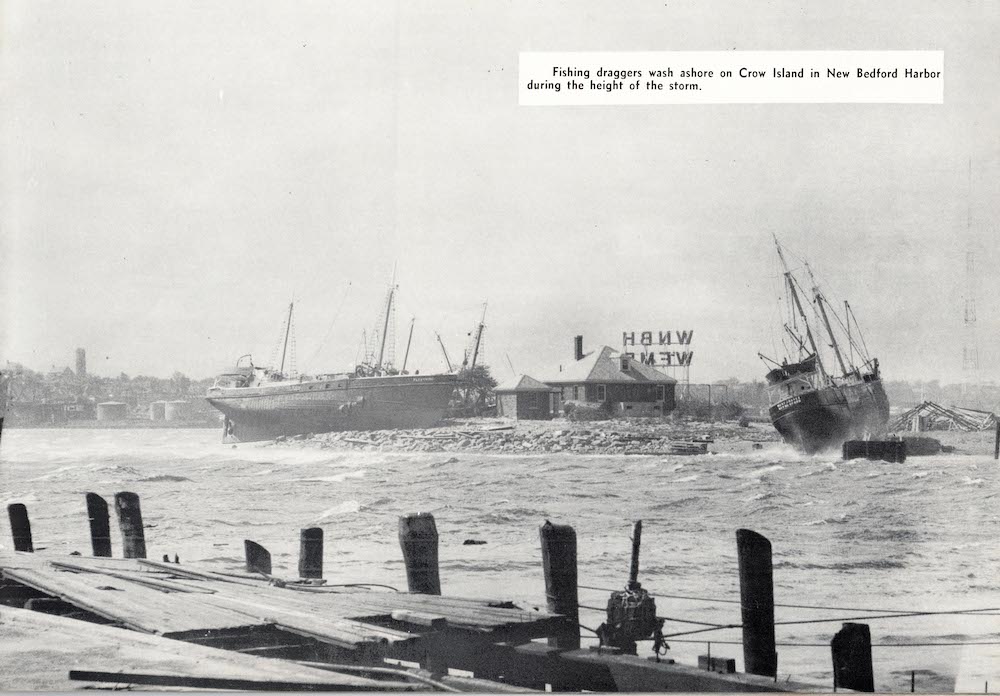
Areas of New Bedford, Fairhaven and Acushnet, MA were flooded to a depth of eight feet by tidal surges which reached 12.5 feet above mean sea level in September 1938, and 11.9 feet above mean sea level during Hurricane Carol in August 1954.
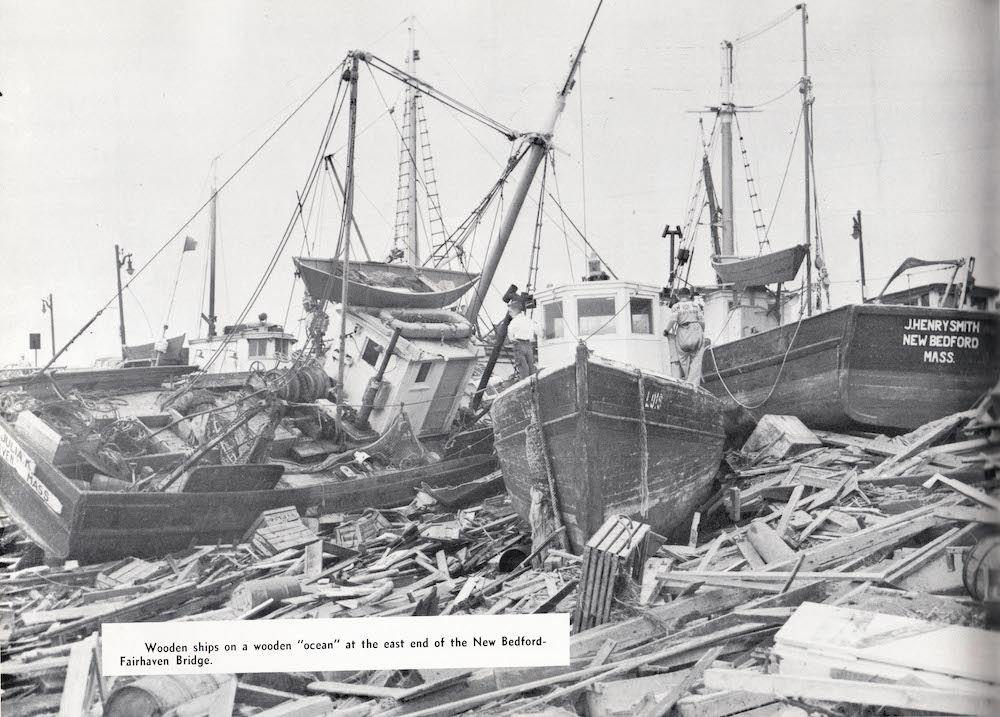
Hurricane Carol was the first named hurricane to strike New England since hurricanes first started being given names around 1950.
Images from “Hurricane! 1954,” published by Cape Cod Standard-Times, 1954. Courtesy of the New Bedford Free Public Library.
Construction of the barrier began in October 1962 and was completed in 3.5 years. The project required extensive planning from the U.S. Army Corps of Engineers, including the acquisition of approximately 36 acres of land, relocation and modification of buildings, power cables, sewerage and drainage facilities and a small boat yard. Building the steel doors at the entrance of harbor included erecting a structure on the floor of the ocean with walls strong enough to hold back the waters during construction.
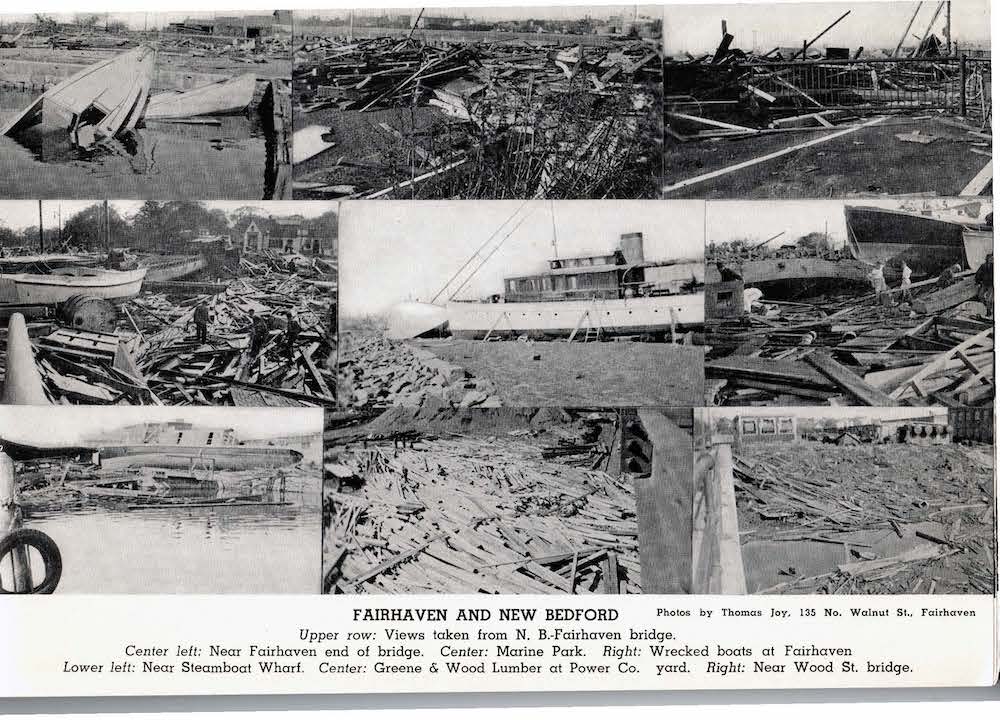
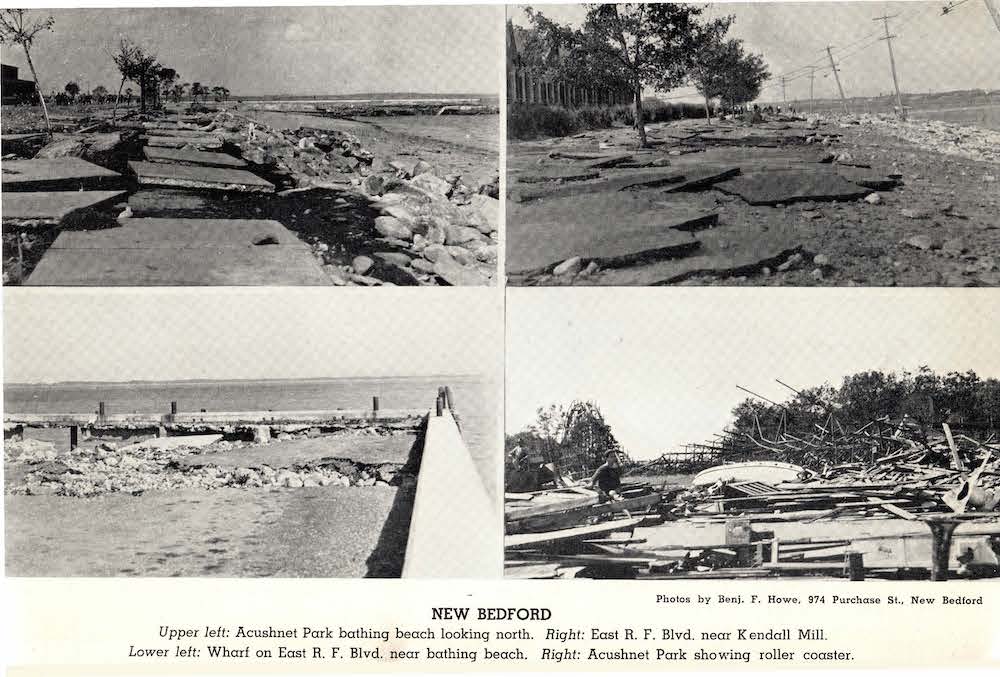
Images from “1938 Hurricane Pictures,” published by Reynolds Printing, New Bedford, MA, 1938. Courtesy of the New Bedford Free Public Library.
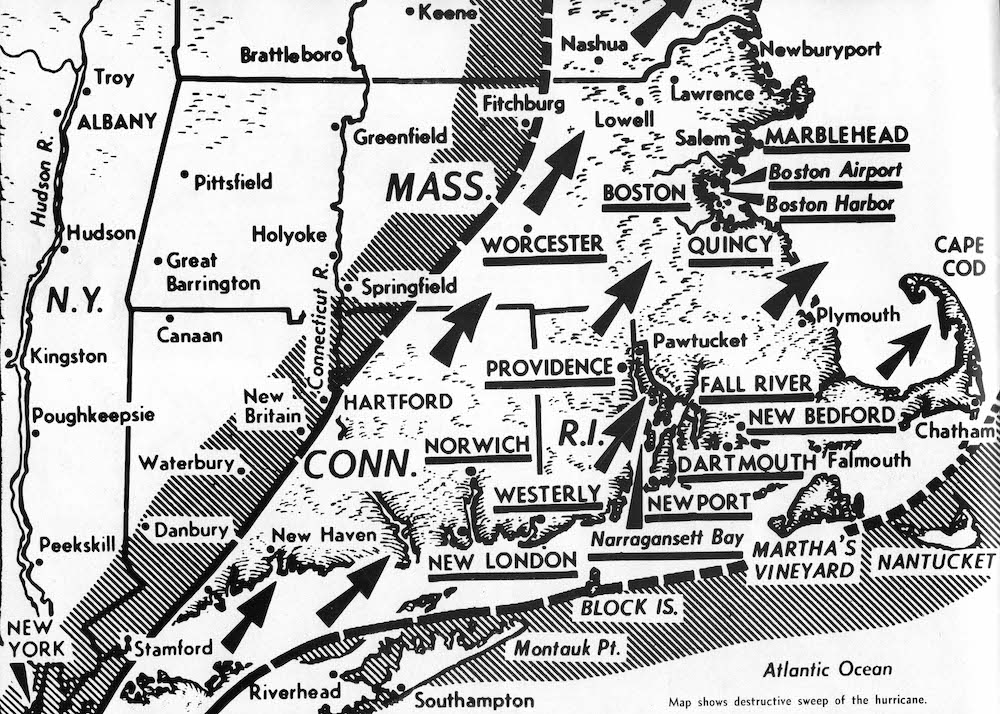
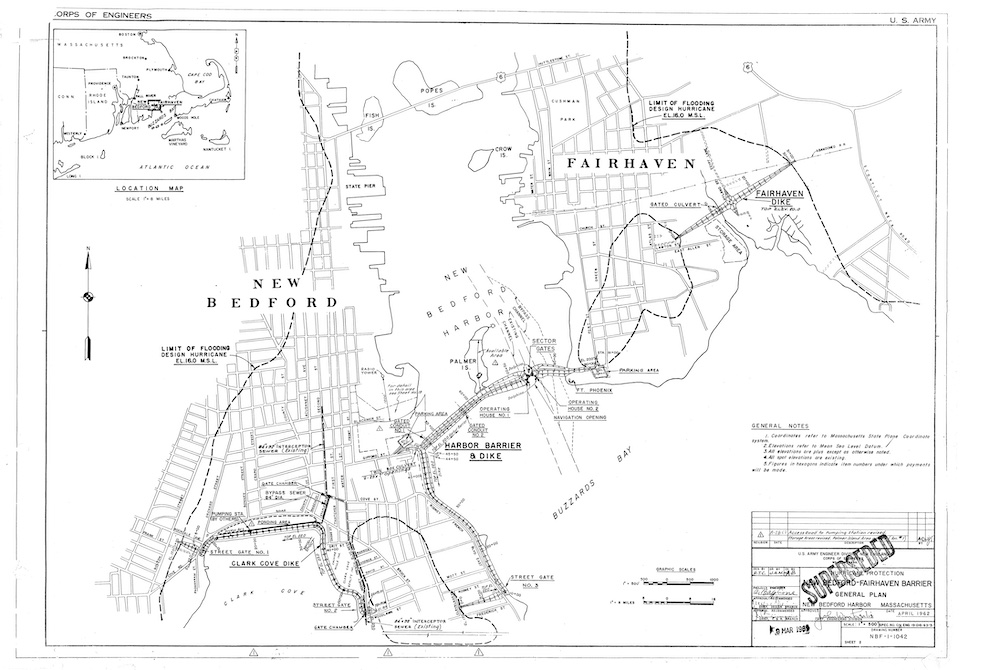
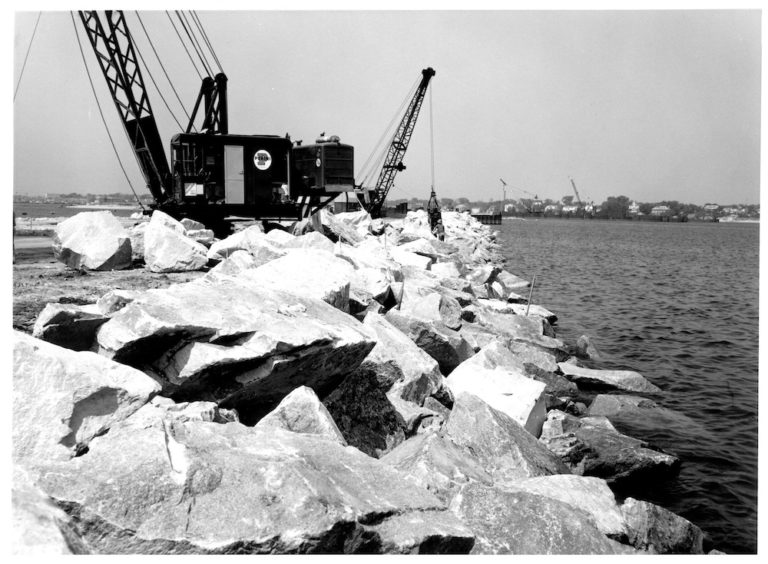
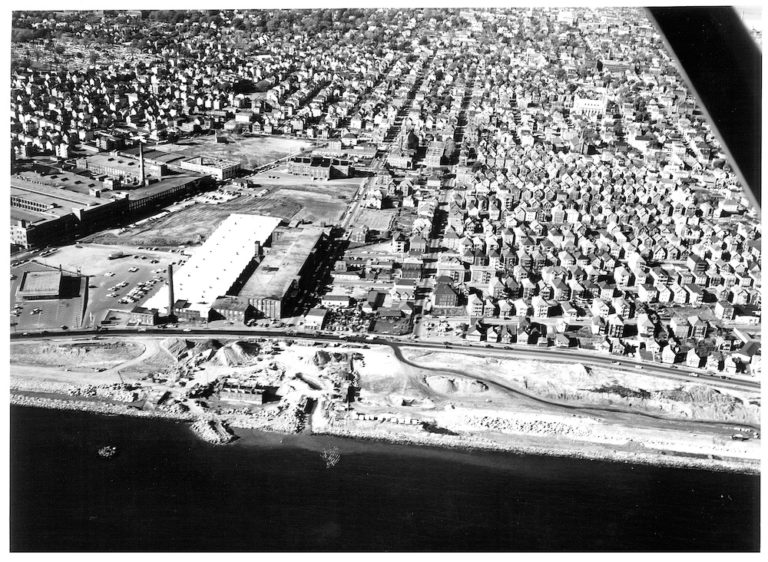
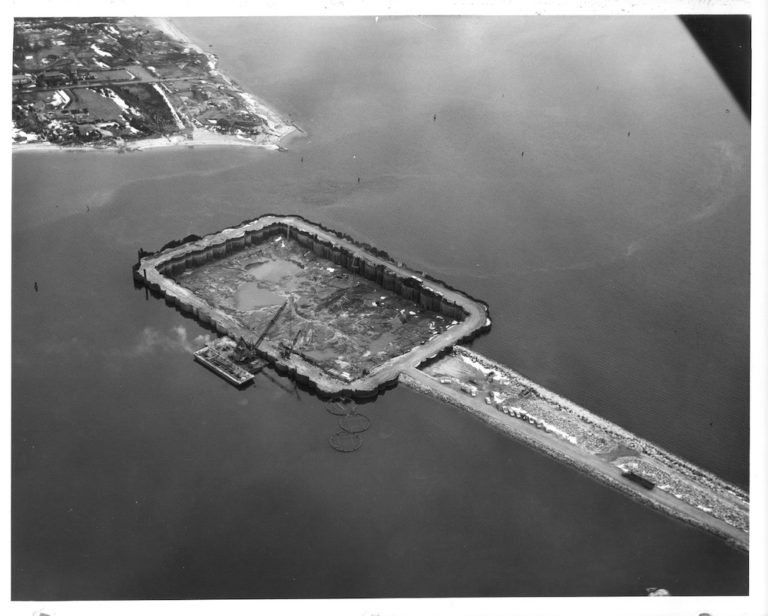
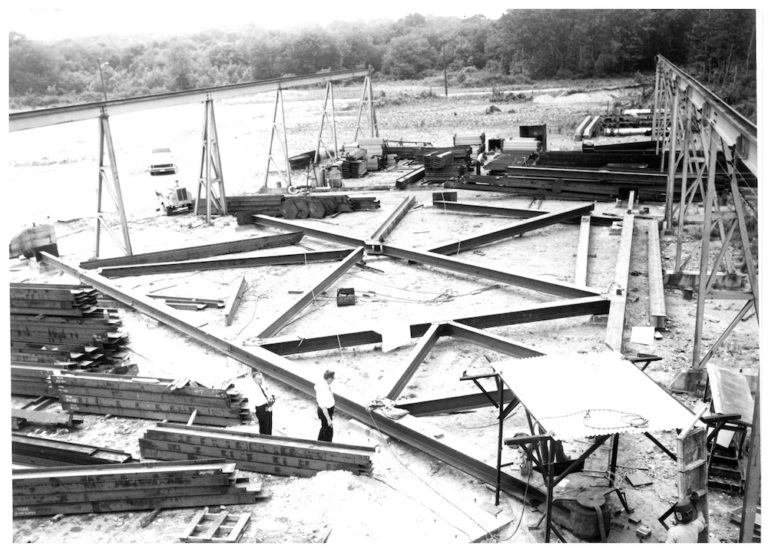
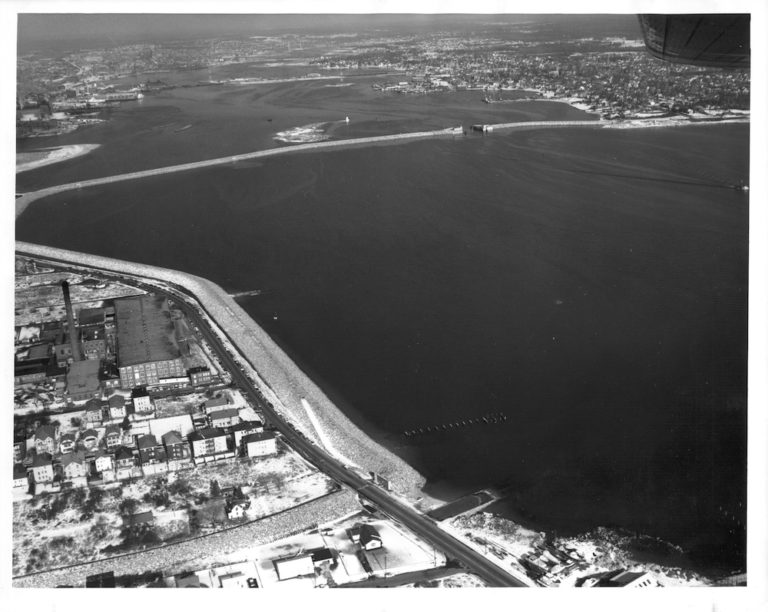
Images courtesy of the U.S. Army Corps. of Engineers, New England District
